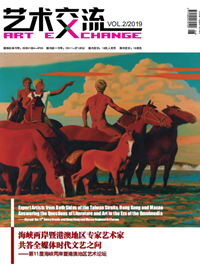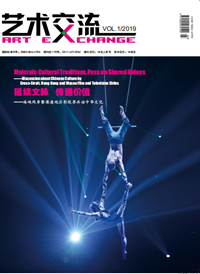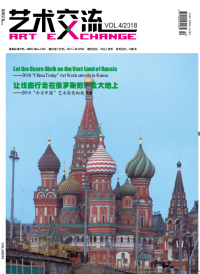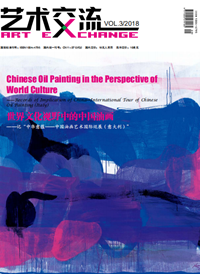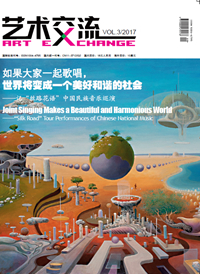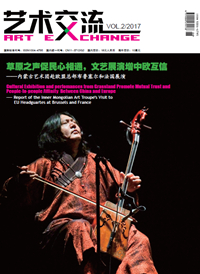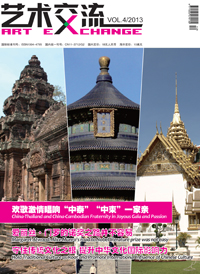Use Lens to Present Folds of Life
Art Exchange VOL.Art Exchange|Wang Su Photo by Liu Ruixin
Use Lens to Present Folds of Life
Interpretation of Liu Ruixin's "Edge & Survival"
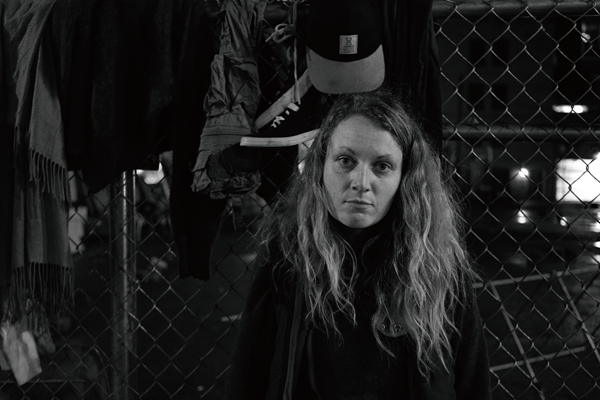
December 30th, 2018. Vancouver was filled by rain every day in winter. As night fell, a girl curling up in front of a barbed wire covered with worn clothes has stabbed my nerves. As we looked at each other, I couldn't help but stop. Her name is KYLA, and she relied on selling garbage and government relief. Here is the place where she and her husband were standing all year round. "It's so late, and raining again, it's time to go home." She pointed to the tent on the side of the road and said, "We live here." This is another surviving way at this beautiful city that is most suitable for human habitation in the world. Society is progressing, but they are not.

December 15th, 2018. In the period of two years, I have met and interviewed this street painter on five different streets in Vancouver. His name was Dary Brown, who had a beautiful wife playing the violin. The couple lived on the streets of Vancouver for a long time relying on their talent. Without any professional art education, Dary Brown likes oil paintings, focusing on small-scale anthropomorphic animals and sometimes abstract characters. His painting style catered to the requirement of leisurely, self-pity and romantic petty bourgeoisie in North America, plus a low price of only 5 Canadian dollars per piece, he could sell several pieces a day. "My wife and I have become accustomed to this kind of life. She plays the piano, I paint, and we are accompanied by our hobbies all the time. There is nothing wrong with it." He was silent for a while upon talking, the next words he said still made me feel sad. "We are working very hard to get a small house of our own, and no longer live on the street. Maybe then we could have the ability to have a baby."
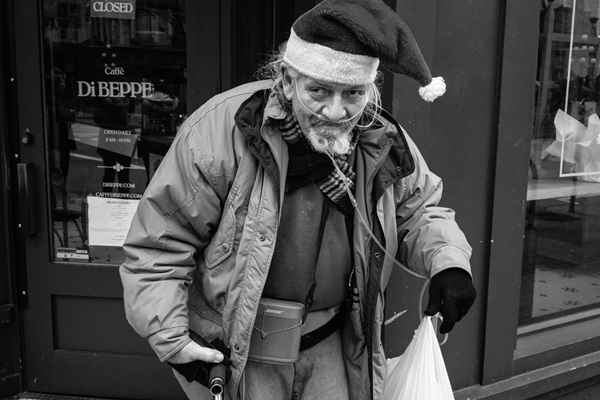
Until now, there are three primary means in which humans have stored their own memories of civilization: images, words, and sounds. The image has the longest history, under the influence of technology support and life rhythm, now it is also the newest and fastest way, and even today's era is recognized as an era of reading. Today, figurative images, with the amplification of social media communication effects, have far more narrative power and efficiency than abstract texts. As the saying goes, "a picture is worth a thousand words" is a fact we have to accept. However, another fact is that the surface content of the image may be well known, but its logical connotation and deep metaphor still require to be interpreted in words. This is the paradox of the relationship between words and images.
The images from Liu Ruixin's series of Edge & Survivalphotography works first involve the living conditions of the foreign population. These ordinary people, at the bottom of the state of life and living conditions, allow a Chinese photographer with a compassionate heart to touch the bottom world and grassroots organizations of human existence. Being able to discover the rich texture and quality hidden in the folds of life is a photographer's luck and sensitivity. It is also the capability of the photographer if he can accurately express in the lens language his understanding and emotions.
The original intention of Edge & Survival is to record the living conditions of specific people in a certain environment. Therefore, in addition to the delicate portrayal of the characters' expressions, gestures and movements, it pays more attention to the intake of environmental factors and the factor of relationship between people and the environment. On the rectangular stage taken by the lens frame, the accurate capture of the dramatic moments at the touch of the camera shows the photographer's image control ability; the angle of the eye view and enough distance demonstrate the photographer's respect for the subject. Showing enough respect. Use the stealth technique to put the camera in the most hidden place, let the lens do the observation like the naked eye, keep the moment of the character in the natural state, the scene and the characters are integrated, and the two factors do not compete each other for catching eyeballs.
Anyone living in a foreign country will inevitably face cultural differences and conflicts, and will conduct the comparison in various aspects involuntarily, especially in the case of huge differences in the local culture between the East and the West. The consciousness that "I am a foreigner, and different from rest of them" should be the strongest; while carrying out self-identity, one will also involuntarily identify each other, which in turn is one of the ways and methods of self-identity and construction. Or, for a photographer observing the world through the lens, the self-identification and the identity of others through the "viewing" of the inward and outward observation are basically simultaneous and fulfilled at the same time.
The original street scenes, "click" once framed by a Chinese photographer, are highlighted as the meaning of the symbol. This is the group identity of the other party given by the photographer.
Such identification involves a mechanism for generating visual culture. People are born naked. The flesh, the outer clothing, and the environment that carries them appeal to the visual in the form of images. Together with the standard formula of the social experience of the viewers, through the mixing of thoughts, the output presents us with a metaphysical signal. That is: identity. Today's uniforms and ancient armor are just extreme examples of identity. The information carried by the identity documents belonging to each of us nowadays is only one of the most basic signs of it.
The "identity" issue should indeed cause us to be alert enough, because it has been inevitably encountered by everyone, from time to time, and sometimes become even a big problem, which is small to us and big to the whole world. This issue does not exist independently, but in "relationship"; in addition, it is manifested in the similarities and differences with others; as long as there are two people in the world, it constitutes "identity relationship". From two people alone as a small scale, or one walking in a neighborhood group as a small range of daily life, to the "World War II" involving Jewish identity issues as a wide range of history, the complex and subtle identity relationships, everywhere at all time, affect people's manners and behaviors, and also the international relations and the statusquo of the world. Therefore, the book Themes of Contemporary Art: Visual Art after 1980 by American writers Jane Robertson and Craig McDaniel sumsup "identity" as one of the seven visual art themes of contemporary world, ranking the top. The themes of the body, time, venue, language, science and spirituality that followed are also most important, which is in line with artistic facts and social reality.
In many complex relationships of identity, the relationship between "I" and "the other" is the most important and prominent factor; if one more dimension of the environment is added, more complex metaphorical meanings will emerge immediately. In a work such as Edge & Survival, "I" is hidden at one end of the lens, and "the other" is imaged at the other end; "I", as a passer-by is only an implanted "alien" for the environment in which the lens is displayed, and the characters in the lens are the "others" who are parasitic while depending on this environment. This type of shooting behavior, in a coexistent environment, separates the "I" and the "other" psychologically through the separation of the lens.
However, with my understanding of the nature of this "species" of the photographer, harmless to humans and animals, this kind of shooting is absolutely not malicious: they are only greedy at most, hoping to incorporate all the world's images into their own shots greedily. It is just the normal reaction of human memory instinct in this "species" of a photographer, whose bounden duty is to record.
It is true that the lens, nature of glass, is an icy "spacer", but the gazes at both ends of the lens are warm, so it can also be regarded as a metaphor for the "connection" between both ends of the lens; we can consider such shooting as the positive attempt of the photographer to understand the "other", "I" and the two-sided boundaries and connections through the lens.
For this photographer from China, his lens is especially friendly, warm and kind. The plural form of "peace" is an ideal state amongst diversified countries and regions, and the singular form of "equality and friendship" is the ideal state of interpersonal relationship. This is the case with Liu Ruixin's lens. A horizontal angle and, a sense of distance are not from his original intention, but from the potential reaction of the historical and realistic national cultural psychology, as well as the natural response of his personal cultivation and civilized education, especially its inherent status and the "identity" generated by the shooting site. In terms of psychological concept, such viewing and shooting have resulted from the so-called combined effects of collective and individual unconsciousness.
In the context of globalization, the cross-cultural identity flows are becoming more frequent and large-scaled, making identity issues more prominent. In addition to the pessimistic record on the surface, the photographer still tries to find the possibility and mechanism of warm communication between the two sides through the lens, although it may never be realized after intentionally and unintentionally carrying out the two-party identity and self-identity construction, and fully understanding the essence of the "always be the other" between "I" and "the other". This is a kind of courage and an ideal, after all.
Copyright © 2011 CFLAC Corporation, All Rights Reserved



